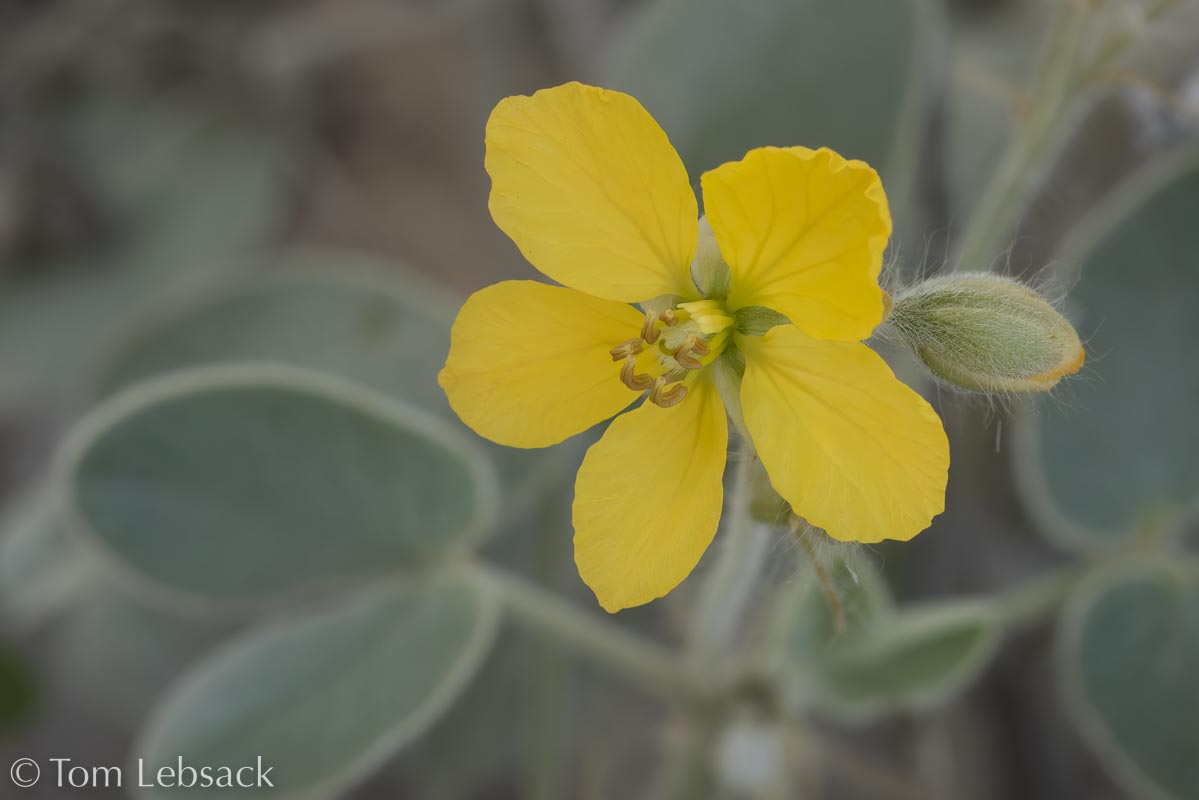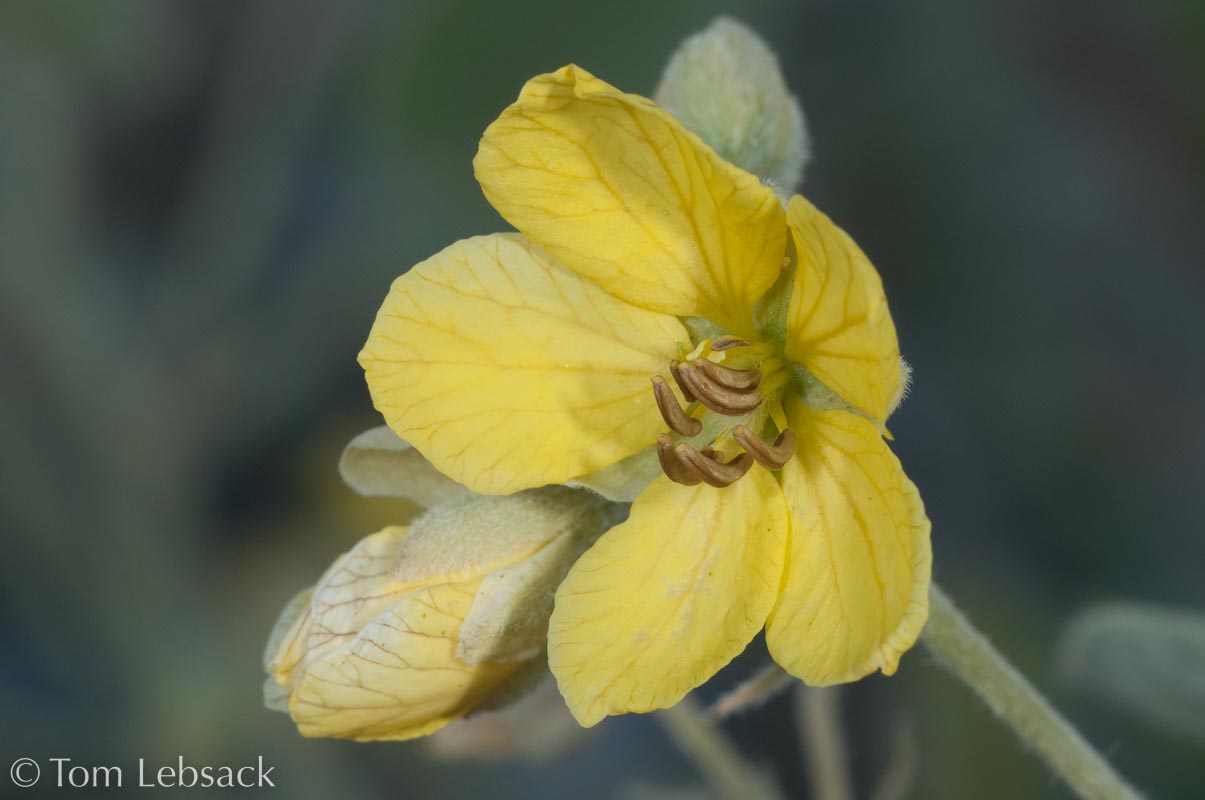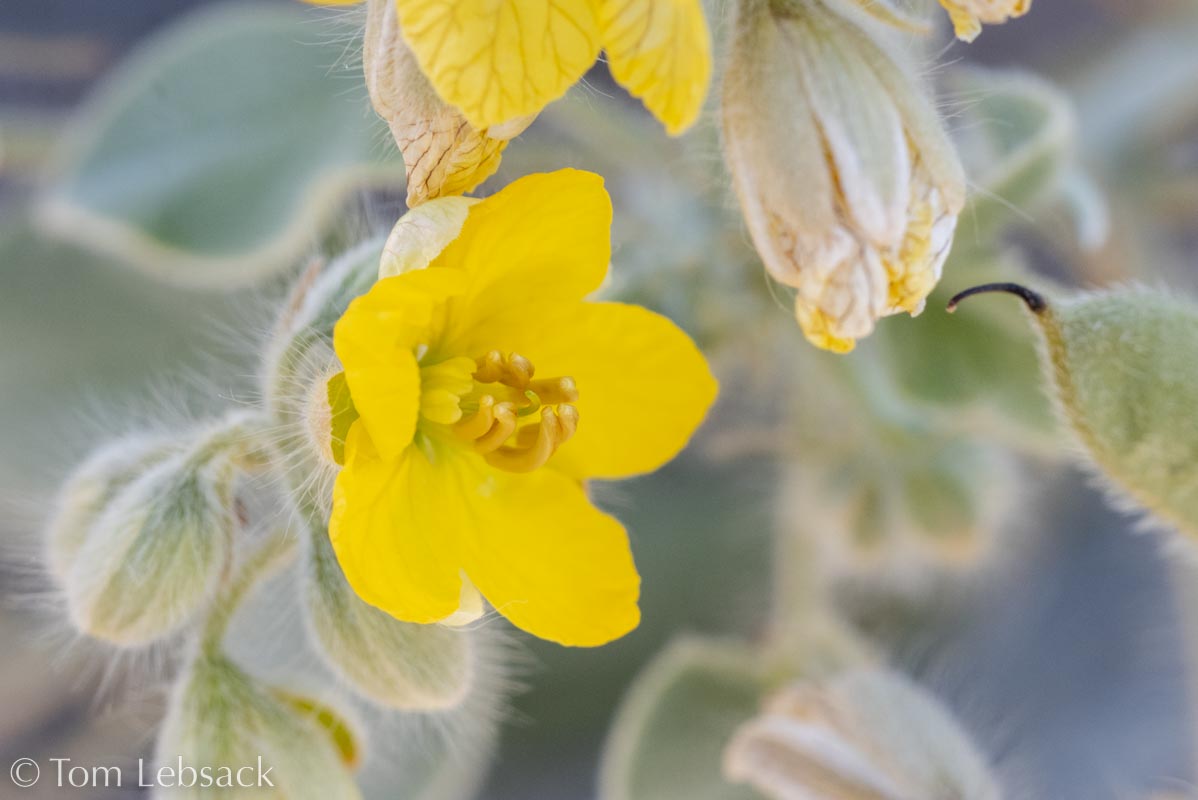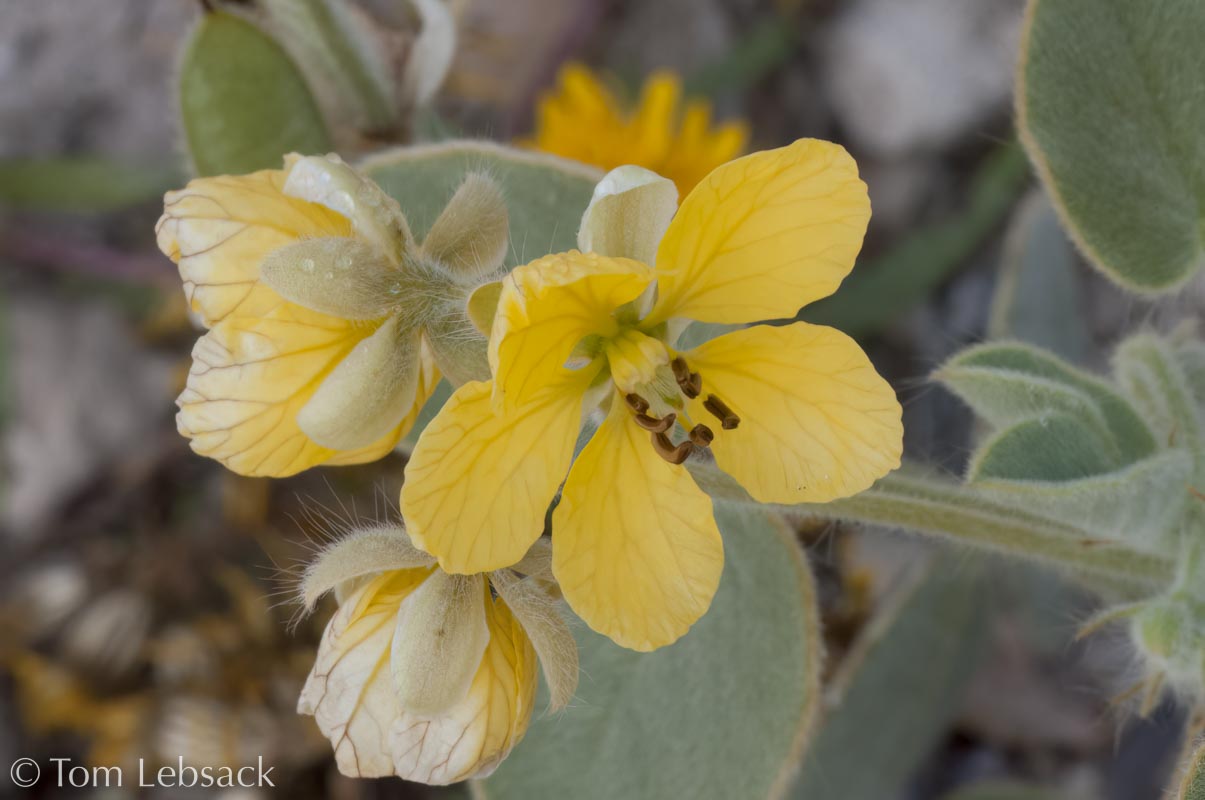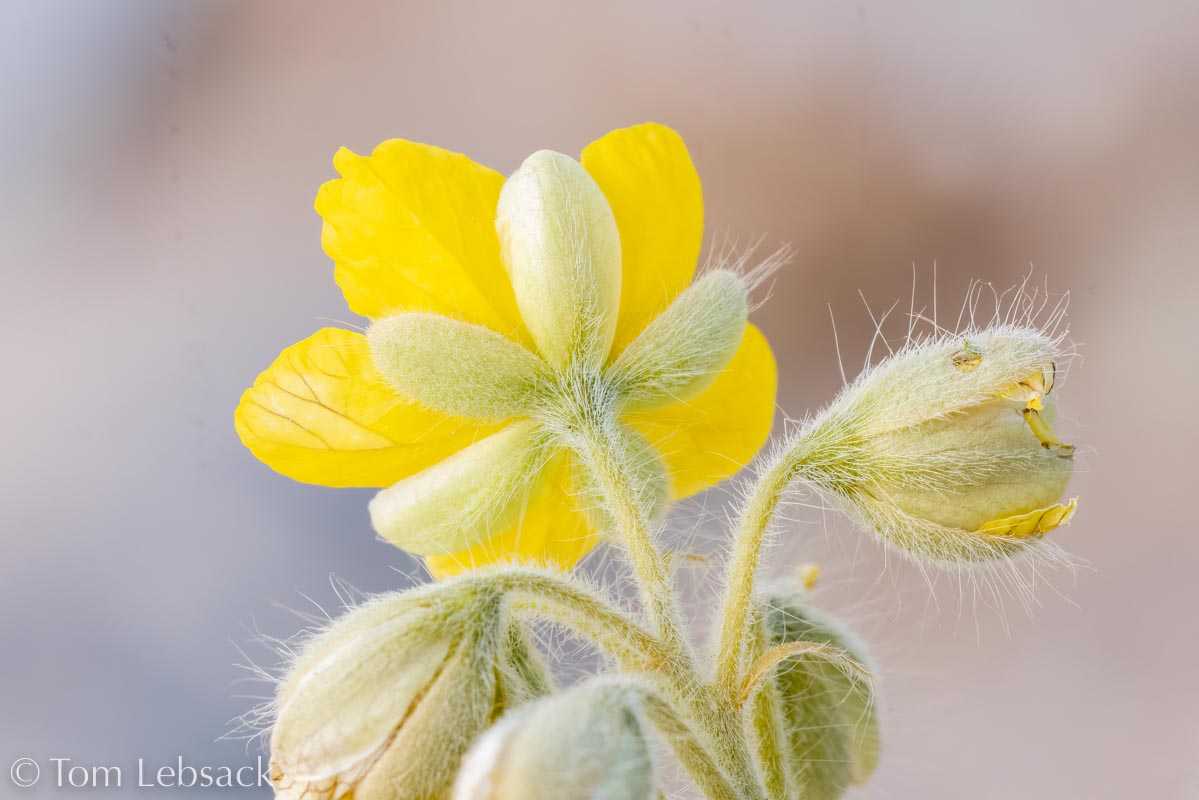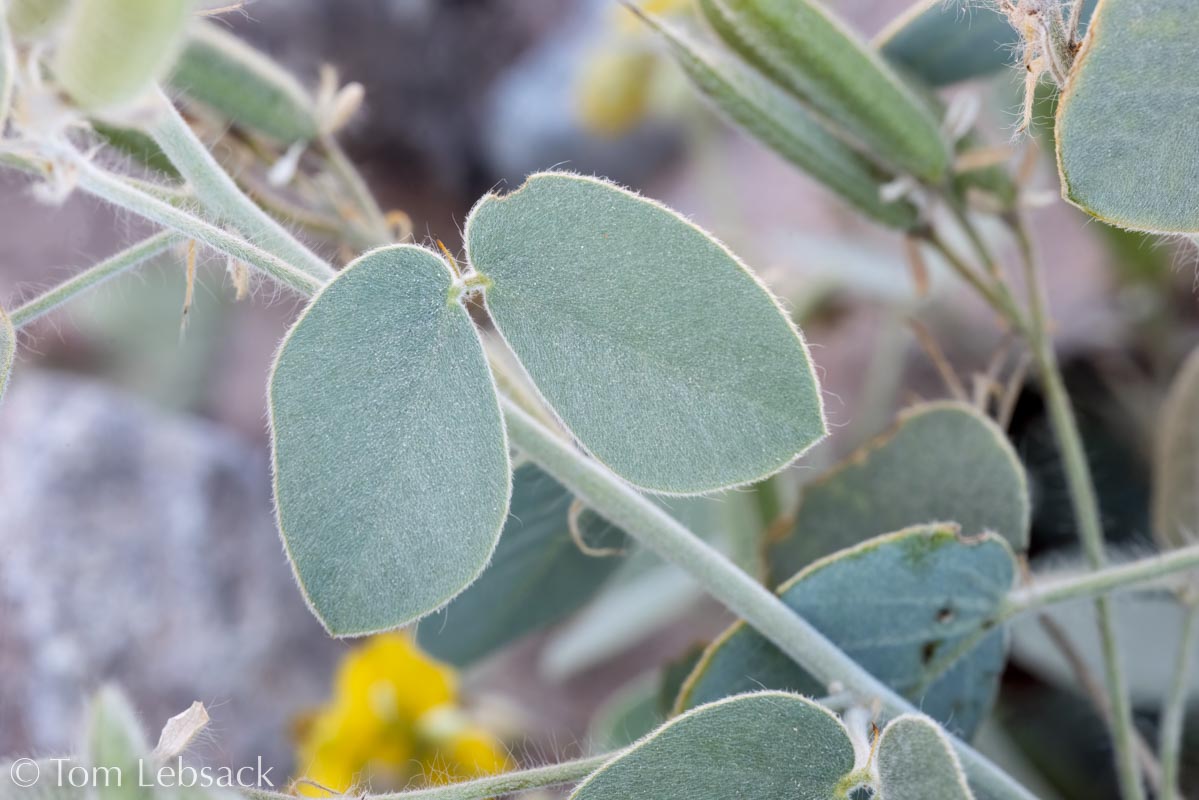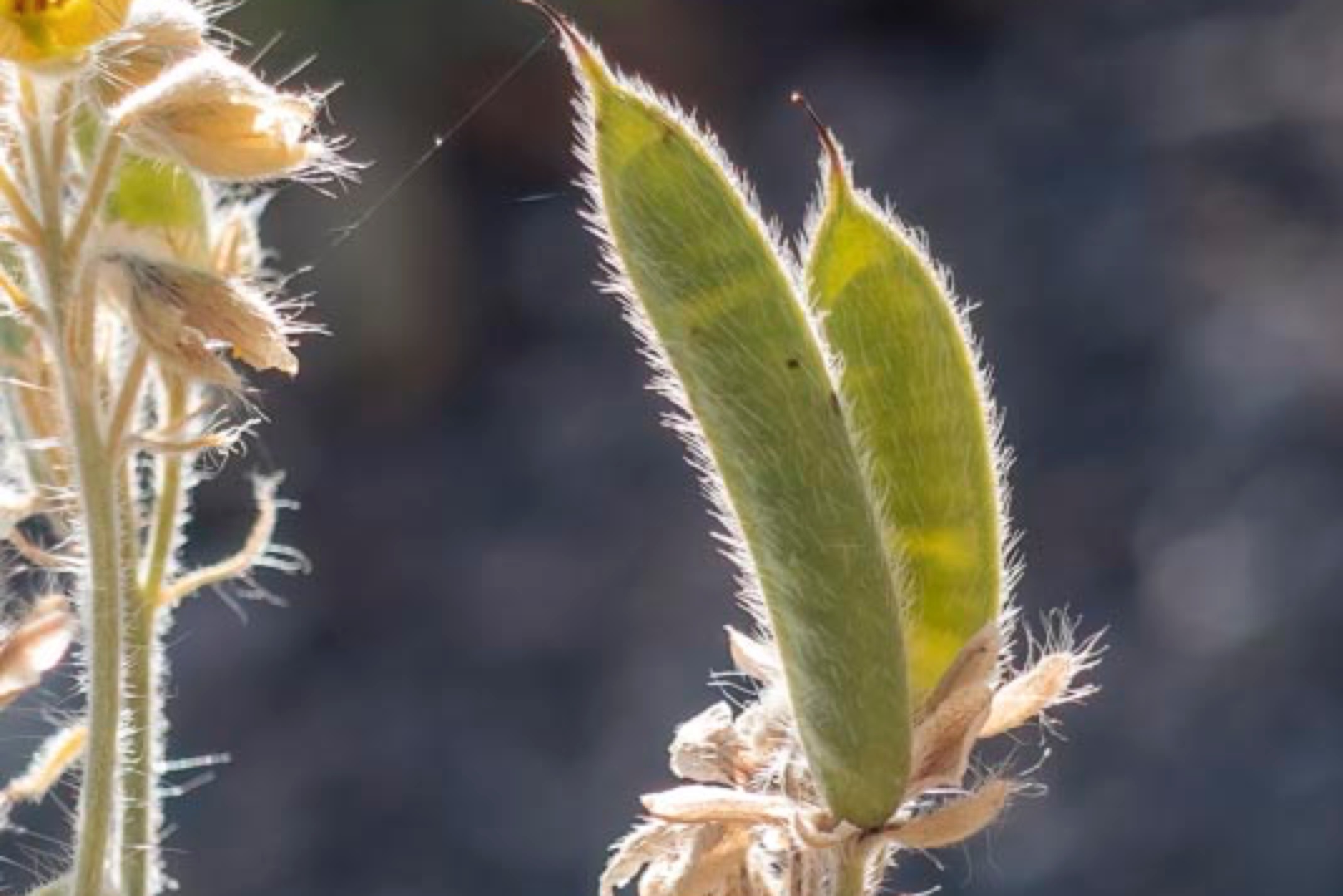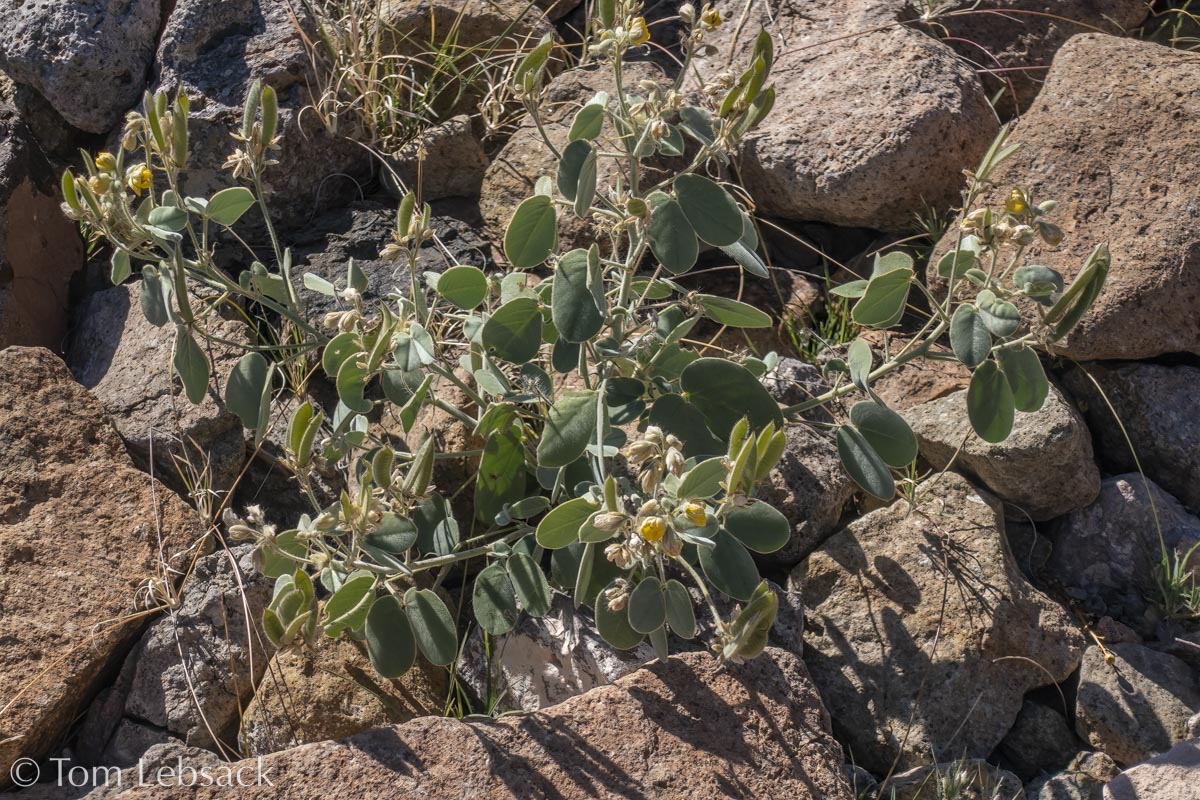Texas Wildbuds
Senna durangensis
(Durango Senna)
| Scientific Name | Senna durangensis (Cassia durangensis) | USDA PLANTS Symbol | SEDU |
| Common Name | Durango Senna | ITIS Taxonomic Serial No. | 505151 |
| Family | Fabaceae (Pea) | SEINet Reference |
Click Here |
| Description | Habitat: Desert habitat, dry, gravelly, limestone soils; 1500 to 3500 ft.; in the US, found only in Brewster and Presidio counties. Plant: Low-growing perennial, up to 20 inches tall, usually much less; few to several stems densely covered with fine grayish or yellowish hairs. Leaves: Compound leaves with a pair of unsymmetrical broadly oblong to nearly round leaflets, 1-3/8 to 2 inches long and 3/4 tp 1-3/8 inches wide on petioles generally longer than the leaflets; thin, erect, brownish gland between the leaflets; fine hairs on both leaflet surfaces. Inflorescence: Clusters of 1 to 6 pale yellow flowers on peduncles arising from leaf axils and above the leaflets; drooping flowers about 3/4-inch across with 5 petals with obvious brownish veins; 10 light brown stamens, the upper 3 much shorter; hairy sepals about 1/4-inch long. Bloom Period: May to July and in the fall. Fruit: Usually erect and straight (sometimes slightly curved) pods 1-1/4 to 1-5/8 inches long and 1/4 to 1/3 inch wide, densely covered with fine hairs. References: Cassia durangensis in "Manual of the Vascular Plants of Texas" by Correll and Johnston; "Wildflowers of Texas" by Michael Eason, American Southwest and SEINet. Note: Very similar to S. bauhinioides with the main obvious differences being the leaf shape, the number of flowers per cluster and the shape of the pod. The images here are hopefully correctly identified. Also, "Little Big Bend" by Roy Morey shows the very similar S. pilosior but there is little in the literature to corroborate that as an ID. |
BONAP Distribution Map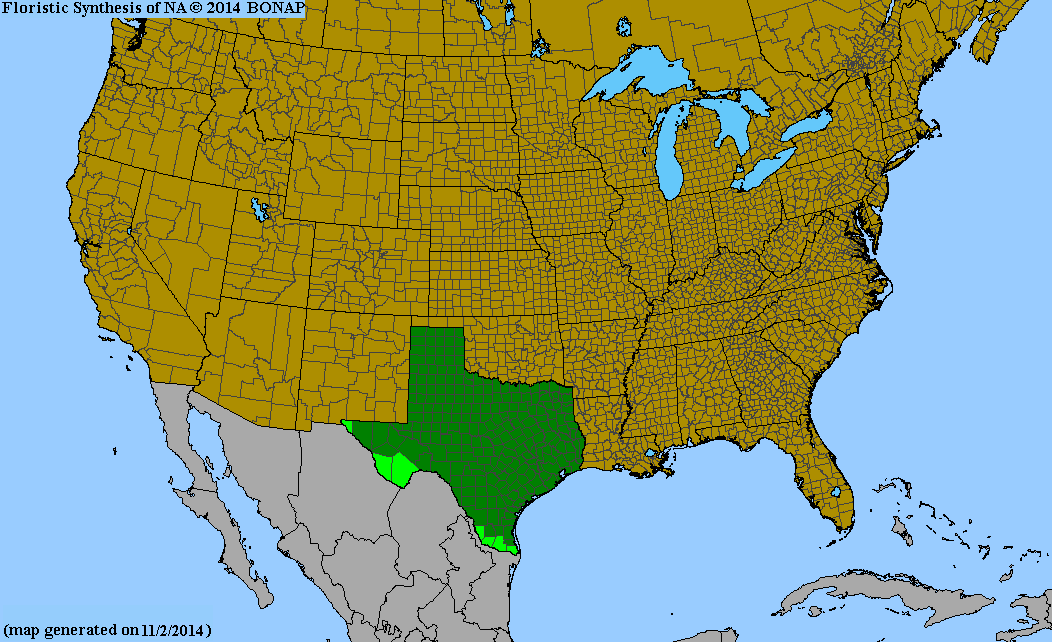 Map Color Key Map Color Key |
Texas Status: Native |
Banner photo of Castilleja indivisa and Lupinus ssp. taken along FM 1323 north of Johnson City, Blanco County
© Tom Lebsack 2025
Every attempt is made to provide accurate, up-to-date, and relevant information, but the completeness or accuracy of any information presented on this website cannot be guaranteed. I use authoritative references to insure high standards of accuracy and review and update the information frequently.
